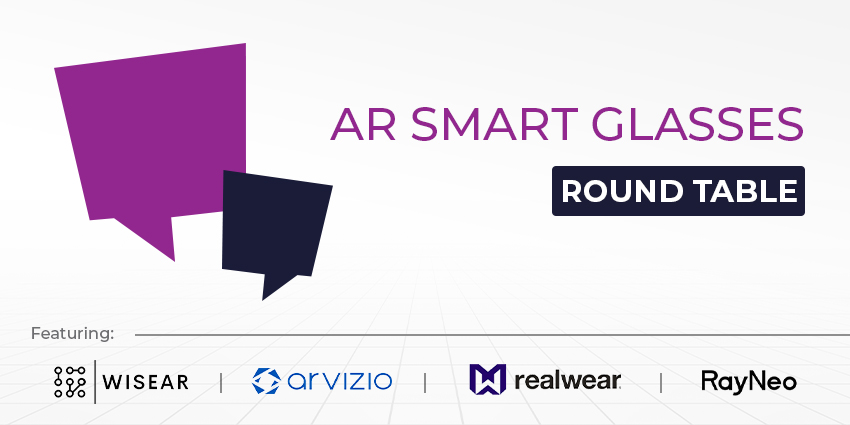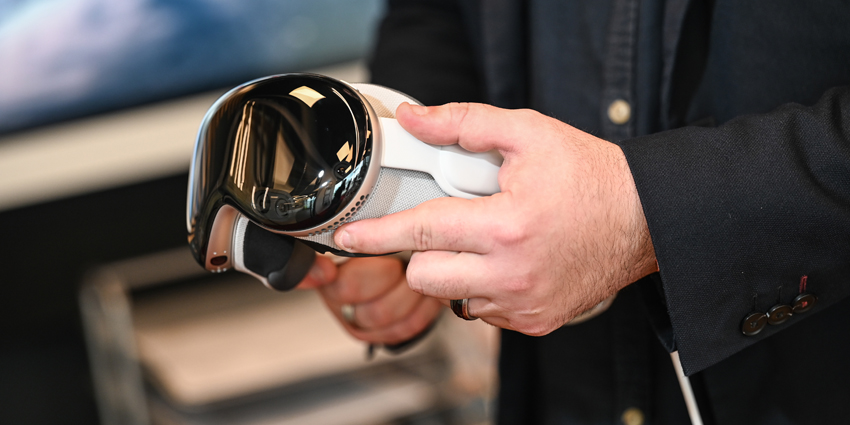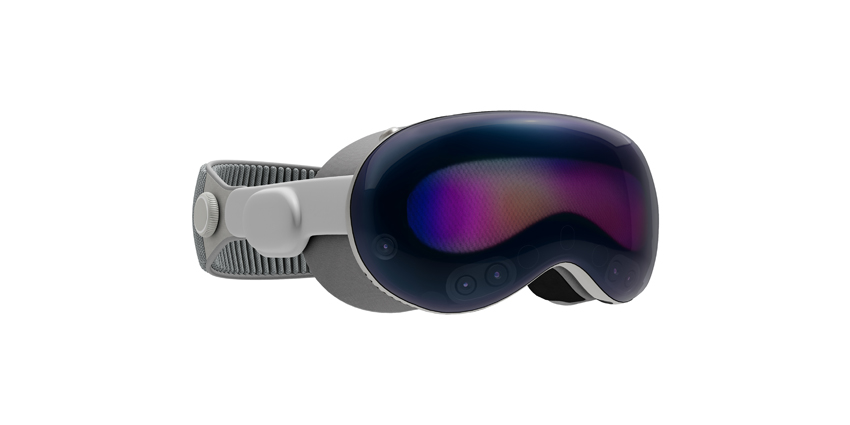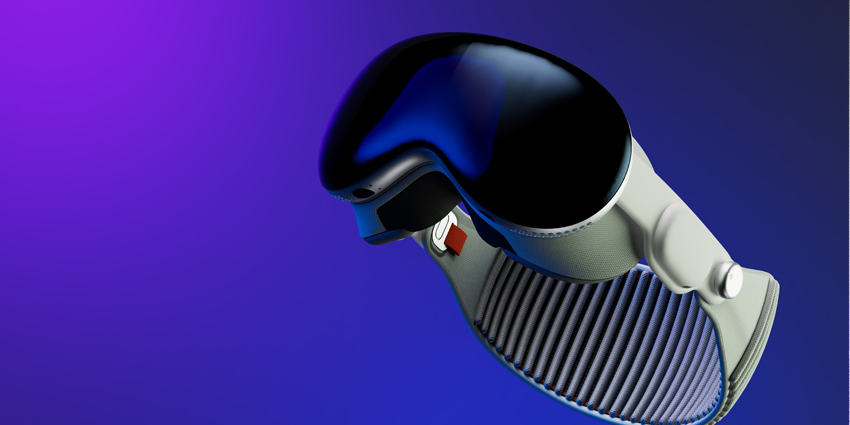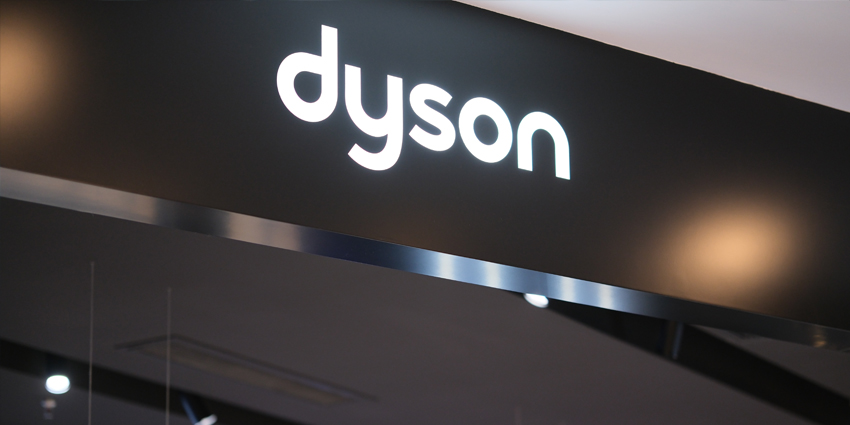XR devices are all over the headlines this month; the release of the Apple Vision Pro has brought spatial computing/mixed reality wearables to the forefront of emerging workplace and consumer-based digital solutions.
However, AR smart glasses are already riding a solid wave of usage in various markets due to a history of respectable adoption rates and a few years of mainstream enterprise and consumer marketplace presence. AR smart glasses can come with many benefits that boost the hardware market as a source of reliable workplace tools, notably small form factors, simple UIs, and accessibility.
The presence of AR solutions is seemingly increasing, and end users can access workplace AR tools via headsets, desktops, and mobile phones, leading to a robust framework for broad and uninterrupted collaboration.
To explore the growing AR smartglasses market, XR Today gathered four leading industry minds representing AR hardware and software providers providing immersive solutions to a diverse range of end-users.
- Bingo Wu, Vice President of RayNeo
- Dr Chris Parkinson, CEO, RealWear, Inc
- Betsy Gilbert, the Director of Partnerships & Marketing at Arvizio
- Yacine Achiakh, CEO and Co-founder, WiseAR
What are the potential B2B use cases for AR smart glasses?
Bingo Wu
AR glasses offer immense potential across various B2B applications. Two areas where we see great potential with AR glasses are cultural tourism and education. In cultural settings like museums and exhibitions, the adoption of augmented reality can transform the way visitors interact with artwork and history.
When observing artwork, users see more than the masterpiece itself. AR glasses can unfold relevant information and artist insights in front of their eyes in real-time. Same as at historical sites, imagine when you approach an ancient monument, informative 3D reconstructions and engaging anecdotes show up, turning a traditional tour into a captivating journey through time.
In education & training, AR glasses can facilitate highly interactive learning experiences. Applications include simulated scenarios and detailed step-by-step instructions.
Betsy Gilbert
We see a number of enterprise use cases for AR/mixed reality smart glasses, including:
- Healthcare: enabling simulation scenarios for healthcare professionals and hands-free guidance and/or access to patient records while conducting procedures, reducing risk.
- Manufacturing and engineering: offering workers real-time guidance to perform complex tasks complete with 3D overlays of parts and schematics, improving safety.
- Field Service: the use of AR smart glasses while conducting installation, maintenance, and repair operations eliminates the need for bulky service manuals and, when remote assistance is included, improves accuracy and efficiency.
- Logistics and warehousing: AR smart glasses can streamline picking and packing as well as guide employees to correct items, reducing errors and improving efficiency.
- Training and upskilling: the use of AR provides interactive, hands-on training across industries without the need for physical presence, reducing costs and improving learning outcomes.
The Arvizio AR Instructor solution also offers remote assistance for real-time guidance and support, as well as AI-powered visual inspection capabilities. These features, combined with guided workflows, 3D digital twins, and the inclusion of additional media, make the use of AR smart glasses a powerful force for improving productivity across many industries.
Dr. Chris Parkinson
Assisted reality smart glasses, such as those from RealWear, cater for 80% of the entire global workforce (over 2 billion people) who are currently classified as frontline workers. The deskless workforce are found within industries such as retail, healthcare, and the supply chain sector, including manufacturing, warehousing, transportation and logistics.
For frontline workers, it’s important that they have technology at their disposal that is entirely voice-controlled and, therefore, hands-free. Using assisted reality smart glasses, the wearer of the device can connect with colleagues via video conferencing applications such as Microsoft Teams or Zoom, where experts on the other end of the line see what the worker sees (point of view) as s/he observes a specific scenario in a factory, for example. This aids collaboration and productivity between staff on – and off-site.
We have a number of customers across multiple industries that have improved their operations as a direct result of deploying assisted reality smart glasses. Importantly, they have also helped reduce those companies’ carbon footprint, especially when the devices are deployed at scale (such as at a major food and beverage manufacturing business).
The travel-related time savings and costs for service technicians, combined with the enablement of digital business models, means that less climate-damaging CO2 is emitted, aiding customers in their triple bottom line.
Yacine Achiakh
AR smart glasses are finding diverse B2B applications across various industries, driven by the need for efficiency and innovation beyond entertainment and consumer uses.
In manufacturing, around 60% of companies employ AR/XR to enhance production floor operations, allowing for virtual assistance and error reduction. In the design and engineering sector, particularly in automobile, architecture, and construction, 53% of businesses use AR for virtual product design and engineering, facilitated by 3D engines like Unreal Engine and Unity.
This aids in creating accurate and innovative designs. Additionally, 26% of companies utilize AR for employee training, offering immersive and risk-free learning environments, especially valuable in industries requiring hands-on experience.
In enterprise settings, AR adoption involves large-scale deployments, industry-specific software development, comprehensive team training, and ongoing support. The high stakes of implementation in such environments make reliable AR hardware accessories a worthwhile investment despite the total cost of ownership being a lower priority.
These varied use cases underscore AR smart glasses’ growing role in enhancing productivity, streamlining training, and supporting complex tasks, making them increasingly central in professional workflows across different sectors.
How do AR smartglasses manufacturers and developers address issues around data security?
Yacine Achiakh
To address data security concerns in AR smartglasses, manufacturers and developers implement several strategies:
- Encryption to protect data transmitted to and from the device, ensuring it remains inaccessible even if intercepted.
- User authentication, including passwords, PINs, and biometric methods like facial recognition, secures access to the device.
- A privacy-by-design approach minimizes data collection, retaining only necessary information.
- Regular software updates and security patches help guard against new threats.
- Compliance with data protection laws like GDPR and CCPA ensures adherence to privacy standards.
- Secure APIs and development frameworks are provided to third-party developers alongside guidelines for secure app development.
Additionally, enterprise applications often include device management tools for IT administrators, offering capabilities like remote wiping for lost or stolen devices.
Additionally, AR manufacturers, particularly in the enterprise space, can look at new technologies to ensure the data privacy and security of their devices. Leveraging new interfaces such as the neural interface that we offer at Wisear, they can offer to their users a voiceless and touchless way to control their devices, with an embarked model that allows them to not share their biosignal data outside of the device. This allows a 100% private interaction between the user and the device.
Dr. Chris Parkinson
To address data security, it’s important that manufacturers of enterprise class smart glasses store any data using industry standard and approved encryption systems, such as FIPS 140-2 encryption recommended by the US Government.
Manufacturers must be transparent about minimizing data collection, ensuring that they only gather what is necessary and protect it from external sources.
Betsy Gilbert
One of the questions we routinely get from customers centers on data encryption and security. AR/MR smart glass manufacturers and those developing applications are implementing robust encryption standards for data at rest and in transit. This ensures that any data captured or transmitted by the glasses is protected from unauthorized access.
Some of these measures include the implementation of strong user authentication protocols, minimizing data collection, and adherence to international data protection regulations. Preforming these operations will prevent unauthorized use and access to sensitive data and reduce the impact of a potential data breach.
In addition to these activities, manufacturers and developers alike need to provide regular updates and security patches – crucial to protect against emerging threats. We have incorporated all of this into best practices at Arvizio, building and maintaining trust with our customers.
What is affecting the acceleration of widespread smart glasses adoption in enterprises?
Betsy Gilbert
The interest in incorporating AR/MR smart glasses into transformative business plans is increasing however, there are a few issues that continue to be raised. The limited battery life can hinder continuous use scenarios however, innovations in power-efficient processors will be critical to extending operational time. Another consideration centers around the weight and “feel” of the glasses/headset.
AR glasses need to be lightweight and comfortable, and balancing the technological components with ergonomic design is a challenge that manufacturers are continuing to address through innovative designs and materials.
We’ve moved well beyond the early bulky designs and continue to see devices with smaller and lighter form factors. In addition to comfort, AR glasses should have intuitive controls and user-friendly interfaces.
These considerations are extremely important to application developers as well. In fact, welcome feedback from customers led Arvizio to revamp our user interface and gesture controls in our solutions. Although generally not an issue, compliance with workplace safety standards and regulations is necessary.
Manufacturers are working to ensure that their AR glasses are safe and do not impede the user’s natural senses and awareness. Finally, in some cases, the cost of the device can be a barrier to adoption for many businesses.
In conclusion, while AR smart glasses hold tremendous interest and potential for use across various industries, addressing these multifaceted challenges is crucial for their successful and widespread adoption in the B2B realm.
Yacine Achiakh
Key blockers to AR mass adoption include hardware challenges, such as the need for lightweight, high-resolution displays in AR devices and longer battery life for Entreprises applications. Despite advancements since the first headsets, current devices still face limitations like limited field-of-view and comfort / ergonomic issues for extended wear.
Additionally, defining mass market use cases is crucial. Mature use cases exist in the industrial and professional sectors for AR. However, for broader adoption, developing innovative interfaces that enhance user experience and accessibility is crucial.
This involves creating interfaces that are fast, private, and accessible, similar to how smartwatches revolutionized access to digital notifications. The upcoming AR evolution requires new human-computer interfaces, where neural interfaces could play a pivotal role, allowing control through facial muscles, eye movements, or brain activity. This will allow workers to leverage this devices for long hours, in a total private way, and with less need of onboarding as the gesture controls are more natural.
Other challenges include ROI and cost of materials/chips, the data challenges just mentioned above, integration with existing corporate systems and apps, network reliability and speed and health and security requirements that are crucial in some industries (frontline workers, defence, healthcare).
Dr. Chris Parkinson
There are a number of factors that are driving the widespread adoption of smart glasses in B2B applications, particularly in the industrial sectors. Improvements in form factor have resulted in devices that are lighter and more comfortable for entire shift use, and with hot-swappable batteries, there is no downtime during a shift.
Devices are now incorporating modularity, too, which enables upgrades to the camera and, battery, and other components, which offer a future-proofing as technology evolves. Enhancements in design and ruggedness are also helping to accelerate adoption. For instance, our latest intrinsically safe device, the RealWear Navigator Z1, offers customers a lighter, faster, intrinsically intelligent device with more bundled software solutions.
In 2024, we expect better device utilization and a faster time to deploy from pilot to global scale. This matters because you will see tremendous ROI and improved safety. Stepping back, I also think that as a society, we will feel more positively about using technology as an assistant and partner than ever before.
Therefore, the adoption of smart glasses will be seen as an investment in the long-term future and improve the overall company culture to one that truly feels empowered, thus helping to accelerate the adoption of smart glasses even further.
Bingo Wu
The form factor plays a pivotal role as it directly impacts user comfort and wear duration. Emphasizing the need for lightweight, ergonomic AR glasses is crucial for extended professional use. Achieving this requires not only exceptional industrial design capabilities but also strong supply chain support for raw materials and mass production.
Equally significant are spatial display capabilities, encompassing factors such as color richness, brightness, transmittance, and 3D effects. RayNeo has strived for breakthroughs, resulting in the development of the RayNeo X2, the world’s first binocular full-color AR glasses on MicroLED optical waveguide solutions.
Despite being consumer-grade, they showcase significant display innovations, boasting a to-eye brightness of up to 1,500 nits with 16.7 million colours. These innovations make the glasses suitable for diverse indoor and outdoor settings, even under intense sunlight, crucial for expanding B2B use cases to specialized industries.
The 5G bandwidth transmission rate is critical for high-resolution AR experiences. The demand for substantial data transfer, especially for intricate 3D model recognition and real-time rendering, underscores the importance of 5G technology.
Its higher bandwidth and lower latency significantly enhance network support for AR applications on glasses. Battery life also remains a key challenge for AR developers, but the industry is progressively addressing this hurdle.
